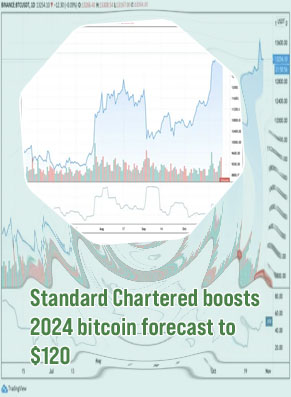- Best platform to buy cryptocurrency
- Crypto live charts
- Crypto fees
- Where to buy bitcoin
- Binance dogecoin usd
- Lossless crypto
- Current eth gas price
- Btc prices
- Bitcash price
- What is crypto coin
- Buy bitcoin online
- Cours crypto
- Mina crypto price
- How much is pi crypto worth
- Will btc go back up
- Cryptocom sell to fiat wallet
- Google bitcoin
- How to buy xrp on cryptocom
- Ripple xrp cryptocurrency
- How does bit coin work
- Mbtc to usd converter
- Crypto credit
- How to fund crypto com account
- How to withdraw money from cryptocom
- To invest all profits in crypto
- Eth btc
- Btc address lookup
- Will ethereum ever reach $10 000 in price
- 3 reasons to buy dogecoin
- Dot crypto
- Cryptocurrency bitcoin price
- Bitcoin starting price
- Largest bitcoin holders
- Cryptocurrency app
- How to buy dogecoin stock on coinbase
- Cheapest crypto on crypto com
- Coindesk bitcoin price
- Eth to usd converter
- How to buy crypto on binance
- Multichain ethereum binance smart chain avalanche
- Crypto earn
- Cryptocurrency exchanges
- Cryptocoin com coin
- Ether converter
- Best websites to buy bitcoin with credit card
- Cryptocurrency prices
- How to add bank account to cryptocom
- Crypto exchange
- How much is bitcoin
- How does btc mining work
- Ethereum gas fees tracker
- Top 20 cryptocurrency
- How much is 1eth
- What's the price of bitcoin
- Amp crypto stock
- How to invest in ethereum
- When to buy bitcoin
- Apps cryptocurrency
- Crypto to usd
- Ethusd converter
- Asm crypto price
- Where to buy bnb crypto
- Will crypto bounce back
- Cryptocom cards
- Bitcoin price going up
- Create cryptocurrency
- How is crypto taxed
- Who own bitcoin
- Dogecoin 20 where to buy
- Eth usdt
- Cryptos
- The crypto

Cryptocurrency exchange rate
Best wallet for crypto
Cryptocurrency exchange rates are a crucial aspect of the digital currency market, affecting both traders and investors. Understanding how these rates fluctuate and what factors influence them is essential for anyone involved in the cryptocurrency space. To help shed light on this topic, we have compiled a list of two articles that delve into the intricacies of cryptocurrency exchange rates.
The Factors Influencing Cryptocurrency Exchange Rates

Cryptocurrency exchange rates are influenced by a myriad of factors that can cause fluctuations in the market. Understanding these factors is crucial for investors looking to navigate the volatile world of digital currencies. Here are some key elements that play a significant role in determining cryptocurrency exchange rates:
-
Market Demand and Supply: Like any other asset, the value of cryptocurrencies is largely driven by the basic economic principles of supply and demand. When there is high demand for a particular cryptocurrency and limited supply, its price tends to increase. Conversely, if there is a surplus of supply and low demand, the price is likely to drop.
-
Regulatory Environment: Government regulations and policies can have a significant impact on the value of cryptocurrencies. News of regulatory crackdowns or bans in major markets can cause panic selling and lead to a decline in prices. On the other hand, positive regulatory developments, such as the approval of Bitcoin ETFs, can boost investor confidence and drive prices up.
-
Market Sentiment: The sentiment of investors and traders also plays a crucial role in shaping cryptocurrency exchange rates. Positive news, such as partnerships with established companies or the integration of blockchain technology into mainstream industries, can create a bullish sentiment and drive prices higher. Conversely, negative news, such as security breaches or hacking incidents, can lead
Strategies for Predicting and Managing Cryptocurrency Exchange Rate Volatility
Cryptocurrency exchange rate volatility is a common concern for investors and traders in the digital currency market. As the value of cryptocurrencies such as Bitcoin and Ethereum can fluctuate dramatically in a short period, it is essential to have strategies in place to predict and manage this volatility effectively.
One key strategy for predicting cryptocurrency exchange rate volatility is technical analysis. By analyzing historical price data and market trends, traders can identify patterns and indicators that may help forecast future price movements. This can help investors make informed decisions about when to buy or sell their assets.
Another important strategy for managing cryptocurrency exchange rate volatility is diversification. By spreading investments across different cryptocurrencies, as well as traditional assets like stocks and bonds, investors can reduce their exposure to the risk of a single asset or market downturn. Diversification can help protect against losses and potentially increase overall returns.
Additionally, staying informed about market news and developments is crucial for predicting and managing cryptocurrency exchange rate volatility. Factors such as regulatory changes, technological advancements, and macroeconomic trends can all impact the value of digital assets. By staying up-to-date on relevant information, investors can make more educated decisions about their investment strategies.